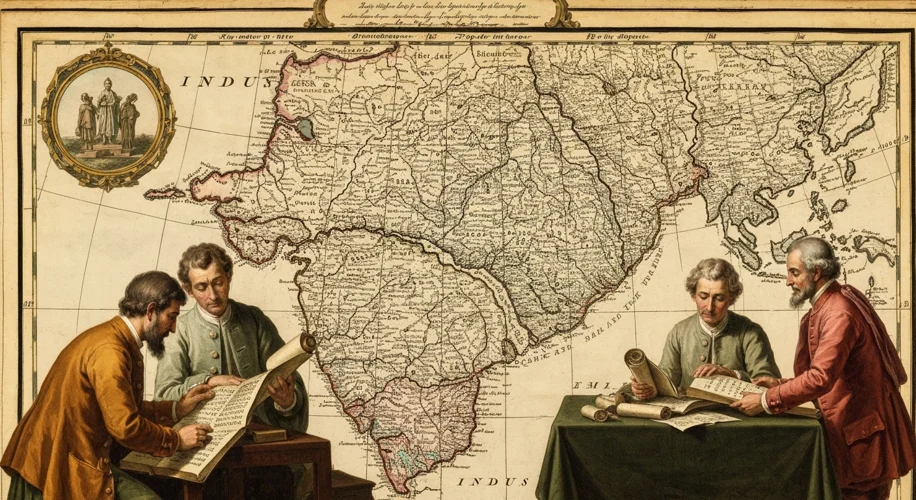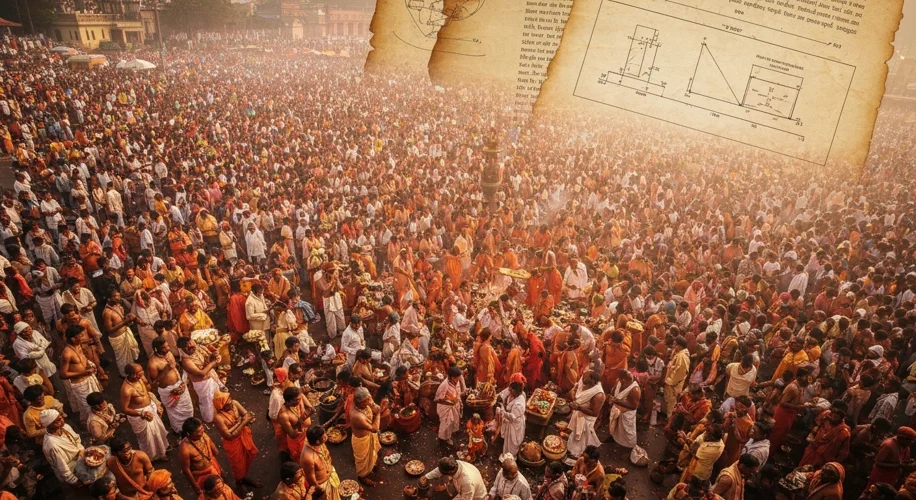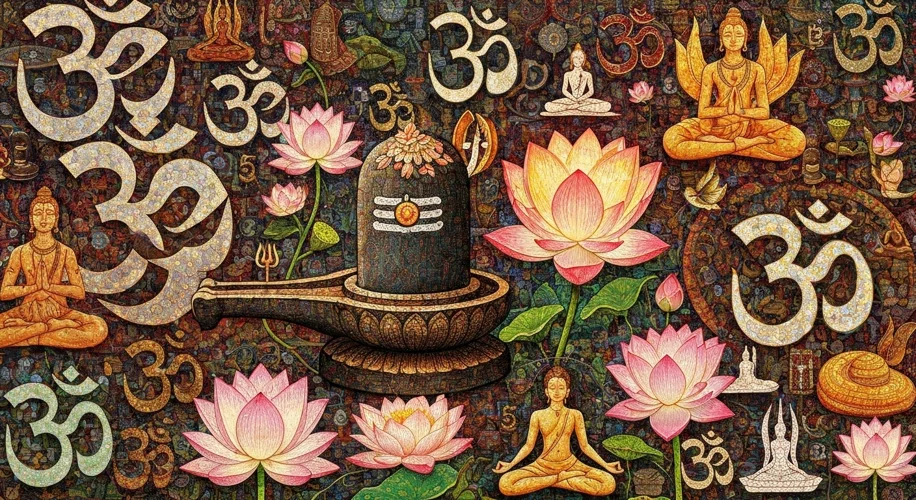In the bustling bazaars of Varanasi, amidst the hypnotic chants and the fragrant smoke of incense, one might encounter a kaleidoscope of spiritual practices. Here, devotees venerate ancient deities, practice yoga in sun-dappled courtyards, and seek liberation through diverse philosophical paths. For centuries, these vibrant traditions have flourished on the Indian subcontinent, weaving a complex tapestry of belief and ritual.
Yet, when these traditions are spoken of to the outside world, they are often encapsulated by a single word: ‘Hinduism.’ But where did this label come from, and how did it come to represent such a vast and varied spectrum of human devotion? The answer, perhaps surprisingly, lies not solely within the ancient texts of India, but also in the historical encounters and intellectual frameworks of the West.
The story begins not with a grand pronouncement from a single sage, but with a geographical descriptor. The term ‘Hindu’ itself is believed to have originated from the Persian pronunciation of the river Sindhu, or Indus. Early Persian traders and invaders, encountering the people living beyond this mighty river, used ‘Hindu’ to refer to them, and by extension, their lands and their myriad practices. It was a geographical marker, a way to categorize the “other.”
As European powers, particularly the British, began to exert their influence over India in the 18th and 19th centuries, they inherited and adapted this term. The colonial administration, driven by a need to categorize, codify, and often control, sought to understand and classify the diverse religious landscape of India. Their scholars and administrators, trained in a Western tradition that often favored singular, monolithic religious identities (like Christianity or Islam), looked for parallels in India. They found a vast array of local customs, deities, philosophical schools, and devotional practices, and the convenient, albeit imprecise, label ‘Hinduism’ became the umbrella term.

This was not a malicious act, but rather a product of its time and intellectual milieu. The 19th century was an era of Orientalism, where Western scholars, driven by both genuine curiosity and a colonial gaze, sought to understand and often define the East. They collected texts, translated scriptures, and categorized beliefs, often imposing their own conceptual frameworks onto the rich diversity of Indian thought. The need for a singular, definable religion was paramount for administrative and intellectual purposes.
Key figures in this process included early Orientalist scholars who translated Sanskrit texts and wrote extensively about Indian religions. Their work, while invaluable in introducing Indian thought to the West, also contributed to the homogenization of diverse traditions under the single banner of ‘Hinduism.’ They identified common themes, such as the concept of dharma, karma, and reincarnation, and presented them as the core tenets of a unified faith.
However, for many in India, particularly those deeply immersed in specific devotional traditions or philosophical schools, the term ‘Hinduism’ might not have resonated as a primary identity. An individual might have identified more strongly as a Shaivite (a devotee of Shiva), a Vaishnavite (a devotee of Vishnu), a follower of a specific guru, or a proponent of Vedanta philosophy. The emphasis was often on sampradaya (tradition or lineage) rather than a singular, overarching religious label.
The implications of this Western construction are profound and continue to be debated. On one hand, the label ‘Hinduism’ has been instrumental in facilitating cross-cultural understanding and dialogue. It has allowed for the easy introduction of Indian spiritual and philosophical ideas to a global audience. It has also fostered a sense of pan-Indian religious identity, particularly in the face of external pressures.
On the other hand, critics argue that this monolithic label can obscure the incredible diversity within India’s religious landscape. It can lead to a superficial understanding, overlooking the nuances of regional variations, the distinct practices of various communities, and the historical evolution of these traditions. It can also inadvertently create a sense of a uniform “Hindu” identity that may not reflect the lived realities of all practitioners.
Consider, for instance, the annual Kumbh Mela, a massive pilgrimage that draws millions. Here, one witnesses a confluence of Naga Sadhus, scholars of Advaita Vedanta, devotional singers, and countless other groups, each with their unique practices and interpretations. To label this entire spectacle simply as ‘Hinduism’ is to acknowledge its vastness but perhaps miss the intricate threads that make up its rich fabric.

Furthermore, the term’s application has often been influenced by political and social contexts. In post-colonial India, the concept of a unified “Hindu” identity has been invoked in various political movements, sometimes leading to complex social dynamics. The very act of defining and defending ‘Hinduism’ against perceived external influences often relies on the very categories that were first constructed externally.
The legacy of the Western construction of ‘Hinduism’ is, therefore, a complex one. It highlights the power of language and external frameworks to shape perceptions of vast and intricate cultural and religious systems. It reminds us that while labels can be useful tools for understanding, they can also inadvertently flatten the rich, multifaceted realities they attempt to describe. As we continue to explore the diverse spiritual heritage of India, it is crucial to appreciate both the historical forces that shaped our understanding and the vibrant, evolving traditions that lie at its heart, recognizing that ‘Hinduism’ is perhaps less a single entity and more a constellation of deeply interconnected, yet uniquely expressed, spiritual paths.


